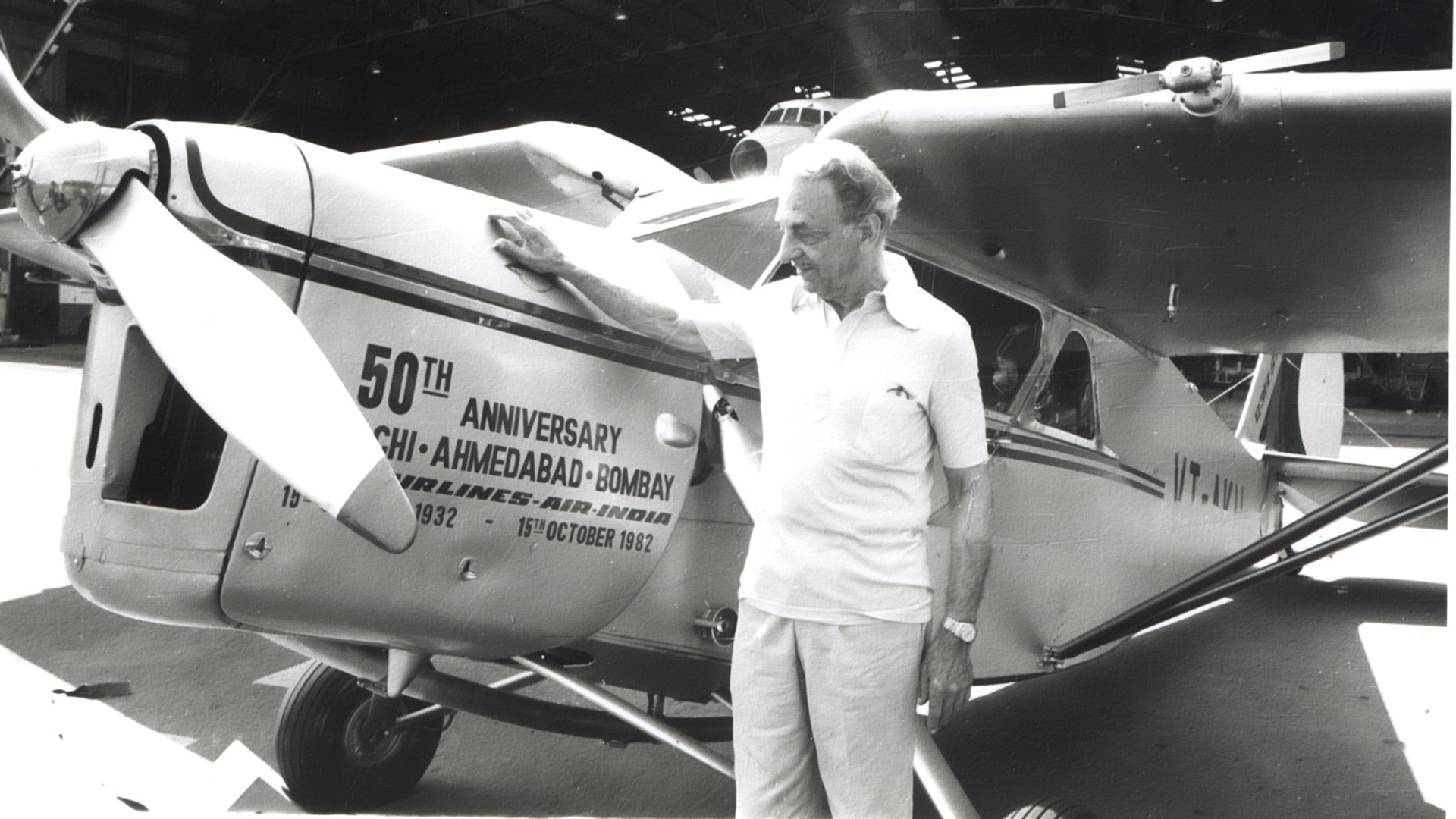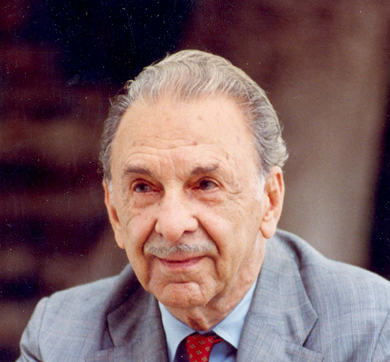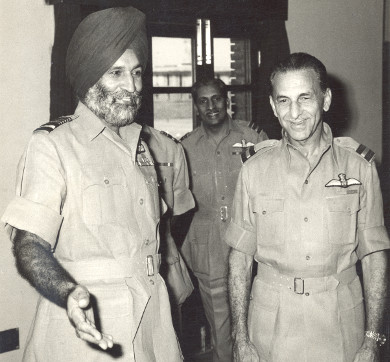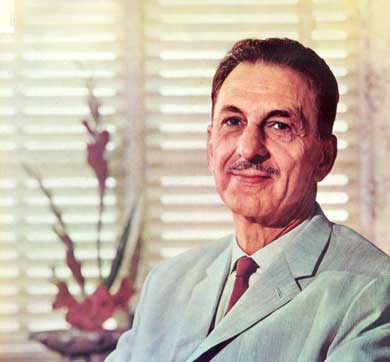2,561 words | 9-minute read
It was in the first decade of the 20th century. Two young boys spent their summer holidays at Hardelot, a beach resort near Boulogne in Northern France. One was the son of the legendary Louis Bleriot, the first man to fly across the English Channel in 1909. The other was the son of an Indian industrialist, RD Tata.
As they played, the boys would occasionally see Bleriot's chief pilot Adolph Pegoud land a plane on the beach. Pegoud was the first man to loop-the-loop in a plane. He was a hero, especially for Tata's young son Jehangir.
In such small beginnings lie the seed of history. The exploits of the Frenchman stirred the heart of the young Indian. At the age of 15 after taking a joy ride in a plane at Hardelot, Jehangir decided to become a pilot and if possible make a career in aviation. Young Jehangir had to wait nine years. He was 24 before a flying club opened in his home town Bombay, India — 5,000 miles away from that wind-swept beach in Northern France. Though not the first to register, he was the first Indian to pass out with 'No. 1' endorsed on his flying licence. And so it came to pass that India's first pilot was to pour most of his creative genius into building an airline for his country, giving his nation wings.
[video courtesy Films Division, Government of India]
Those were years of adventure. In 1930, the Aga Khan announced a prize of £500 to the first Indian who would fly solo between England and India, starting at either end. Among the competitors was a young man called Manmohan Singh. His spirit was willing but his navigation was weak.
Twice he left England with a flourish to fly to India. Twice he lost his way over Europe and had to fly back to England to start all over again. CG Grey, Editor of The Aeroplane observed: "Mr Manmohan Singh has called his aeroplane 'Miss India' and he is likely to!" Another hopeful from the England end was I8-year-old Aspy Engineer. Still another to enter for fun, taking off from the Karachi end, was the now 26-year-old Jehangir RD Tata. At Aboukir near Alexandria in Egypt, JRD ran into Aspy, who had left England a week earlier and who was stranded for want of spark plugs. JRD gave Aspy his spare spark plugs, and they took off in opposite directions. Aspy reached Karachi a few hours before JRD reached England, winning the prize. On the strength of his performance, Aspy was admitted into the Indian Air Force, which had just been created. Aspy Engineer was the second Indian to be Chief of the Air Staff. JRD, meanwhile, had another ambition and he did not have long to wait.
"On an exciting October dawn in 1932, a Puss Moth and I soared joyfully from Karachi with our first precious load of mail, on an inaugural flight to Bombay. As we hummed towards our destination at a 'dazzling' hundred miles an hour, I breathed a silent prayer for the success of our venture and for the safety of those who worked for it. We were a small team in those days. We shared successes and failures, the joys and headaches, as together we built up the enterprise which later was to blossom into Air-India and Air-India International."
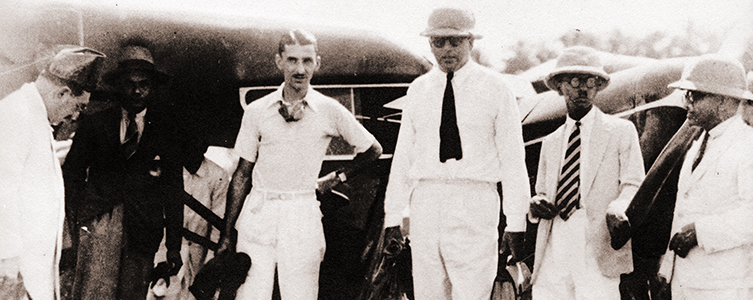
When JRD landed on the Juhu mud flats that October day in 1932, India's first air service was inaugurated. He does not take the credit for it. He gives it instead to a far-seeing Englishman — a former officer of the RAF called Nevill Vintcent, who a year earlier had come to India barnstorming the country giving joy rides. Nevill Vintcent offered JRD Tata a project to start an airline. The then Chairman of Tata Sons, Sir Dorab Tata, was not a bit enthusiastic about the proposition. But the initial investment was small — Rs 200,000 — and he was persuaded by JRD's mentor and colleague John Peterson to give his approval.
"We had no aids whatsoever on the ground or in the air," JRD recalls, "no radio, no navigational or landing guides of any kind. In fact we did not even have an aerodrome in Bombay. We used a mud flat at Juhu (fishing village-cum-beach resort near the city). The sea was below what we called our airfield, and during the monsoon the runway was below the sea! So we had to pack up each year, lock, stock and barrel — two planes, three pilots and three mechanics, and transfer ourselves to Poona (Pune) where we were allowed to use a maidan as an aerodrome, appropriately under the shadow of the Yerwada Jail!"
The annual report of the Directorate of Civil Aviation (DCA) of India for the year 1933-34 stated: "As an example how airmail service should be run, we commend the efficiency of Tata Services who on October 10, 1933, arriving at Karachi as usual to time, completed a year's working with 100 per cent punctuality... even during the most difficult monsoon months when rainstorms increased the perils of the Western Ghat portion of the route no mail from Madras or Bombay missed connection at Karachi nor was the mail delivered late on a single occasion at Madras... our esteemed Trans-Continental Airways, alias Imperial Airways, might send their staff on deputation to Tatas to see how it is done."
Karachi was chosen as the starting point because Imperial Airways terminated there with the mail from England and the route chosen by Tatas was Karachi-Bombay-Madras. Tatas requested the government for a small subsidy for carrying the mail as was the normal practice in other countries. The subsidy asked for was small but the government declined. Tatas reduced the figure to a bare minimum. Government still declined. So Tatas decided that they would just give the service to the country collecting the little stamp surcharge which the addressor put on the envelope to connect it with the Imperial Airways at Karachi. When asked why they did so, JRD replied, "Vintcent and I had faith in the future of aviation and believed that if we came in at the beginning of an era we had a better chance ultimately to achieve growth and leadership in the field."
The unfolding years were to justify that faith. In 1936 the all-up Empire Mail Service was launched by the British government, under which all first class mail travelled by air without surcharge, and Tata Airlines' revenues soared. At the beginning the aeroplanes used were so small that the service was restricted to mail, but a single passenger was occasionally allowed to sit on top of the mail bags — usually with his heels higher than his head!
In 1936 larger aircraft, though still single-engined, were introduced. Tatas felt the need to give more sophisticated training to their pilots and hired an instructor from England to start a training centre for pilots. The Bombay-Delhi service was inaugurated in 1937. Then came the war and all services, including Tatas', were commandeered by the Government of India.
With their airline operations severely restricted and controlled, Nevill Vintcent and JRD Tata looked for alternative avenues for their brimming enthusiasm and their growing expertise. A specially exciting opportunity, they felt, offered itself in the field of aircraft manufacture. Whereas the construction of metal aircraft would have involved an elaborately equipped factory, the De Havilland Mosquito, an outstanding twin-engined fighter-bomber made of wood, could, they felt, be put quickly into production in India. Tatas, therefore, submitted in 1942 a project to the British government for the large-scale manufacture of Mosquito aircraft in a factory they would build for the purpose in Pune. The project was approved by the British government and a new company, Tata Aircraft, was formed to give it life. Land was acquired and a large factory building constructed. Had this plan come off, Tatas would have gone into aircraft production.
The British government had second thoughts and decided instead that invasion gliders should be built under the project. This change was reluctantly accepted by Tatas as the work of building the factory, recruiting staff and organising manufacture had already gone too far to be abandoned. The project was revised accordingly.
Nevill Vintcent was a man of great physical courage and resourcefulness. More than once he flew to England for discussions with the British authorities. Usually flying by Imperial Airways long-range aircraft, he was flown by a sufficiently circuitous route to keep out of range of German fighters. Tragically, however, on one occasion Vintcent, as an ex-RAF officer, arranged to get a lift on an RAF Hudson bomber on the first leg of a flight from England to Gibraltar. The plane never reached Gibraltar and was reported to have been shot down off the coast of France. The loss of Vintcent was a grievous blow to Tatas and to JRD personally, for apart from being the able and moving spirit behind Tata Airlines and Tata Aircraft that he was, Vintcent and JRD were close friends. This tragic blow was followed by the cancellation of the project itself by the British, who in response to Tatas' own enquiries on the subject, discovered that invasion gliders made by Tata in Pune could not be used in the War because there were no aircraft to tow them! Thus came to a tragic end a project on which JRD had set his heart and which, if it had gone through, as originally planned, would probably have resulted in another invaluable addition to India's industry.

In 1946, Tata Air Lines, a division of Tata Sons, went public and became a joint stock company. It was called Air-India. The age of passenger travel had arrived and there was to be plenty of competition. Even during wartime Tatas were working on a scheme to extend their services to London. In October 1947, in the turmoil of the post-partition period, Tatas proposed to the Indian government a service to Europe. They placed an order for three Lockheed Constellations, on faith that this venture would be approved. It was a measure of their faith in the newly born independent India, then in the convulsions of the partition of the sub-continent.
Tatas proposed that the Indian government take 49 per cent of the capital, Tatas 25 per cent and the rest be publicly subscribed. The government had the right to buy a further two per cent from Tatas taking their share to 51 per cent giving them total control. This was the first ever proposal of a joint enterprise between the public and private sectors in the country. The proposal was made by JRD Tata at a most inopportune time, when communal strife raged in Delhi. To his astonishment, JRD got acceptance to his joint sector proposal from the government within weeks. Many years later he asked a senior cabinet minister, Jagjivan Ram, why a decision could be made so speedily in those days when today it took the government at least two years 'not to make a decision'. Mr. Ram replied, "We did not know any better then!"
The proposal provided for a new company to be called Air-India International. It was to be managed and provided with its staff, its maintenance and its services by Tatas' domestic airline Air-India. On June 8, 1948, Air-India International with its famous Maharaja, spread its wings to Europe. The fledgling airline soon established itself as one of the finest air carriers of the world.
Meanwhile India's domestic airlines were heading for a crisis. At the end of the war, planes were disposed of by the American Tenth Air Force in India at throw-away prices. For political reasons the government sanctioned every airline applicant, and India soon found itself with eleven airlines while there was room for only two or three. As a result they all ran into rough weather for there were not enough traffic routes to allocate amongst them. Except Air-India all the airlines lost heavily. In 1953 the government took a decision to nationalise the airlines proposing to merge them into a single state corporation with JRD as Chairman. Mr Tata advised that the domestic and the international airlines of India should be kept apart and two separate corporations be formed. The suggestion was accepted and he was invited to head the international airline, a task he accepted. For the next 25 years he was to be the Chairman of Air-India, and a director on the board of Indian Airlines.
The international airline business is ferociously competitive and JRD, Chairman of some of the largest companies in India, had to give more and more time to the running of Air-India. He carried this burden happily, for aviation was, and remains, his first love. He did everything he could to make Air-India as good as the best among the world's airlines. Its planes were lavishly decorated. He insisted that even if a plane was used for 20 years, it should always look as if it had come out from its factory — new, inside and outside. And it did. With Air-India, efficiently run, JRD saw no reason why all public undertakings could not also be run to the world's best standards and be profitable.

As Chairman, JRD believed in personalised attention. He was dubbed a perfectionist for he called upon his staff: "Always aim at perfection for only then will you achieve excellence." On every flight on which he travelled he kept detailed notes of his observations and would painstakingly take action on them on return to base. He gave India pride in its national airline. His 46-year aviation career spanned an era from the wood and fabric of the little two-seater Puss Moth to the gleaming 400-seater giant Boeing 747. He insisted that there should be no compromise on operating and maintenance standards or on service. One of the airline's publicity chiefs recalls how he once received a midnight phone call at his home from the Chairman suggesting how to improve the wording on a publicity hoarding. "We had to give so much of ourselves because he gave so much of himself," said this executive.
Air Marshal Nur Khan, former head of the Pakistan Air Force, and later Chairman of Pakistan International Airlines, when asked by an Indian magazine what he thought of his neighbour airline, Air-India, and its then Chairman JRD Tata, replied: "A great airline and JRD is an epic figure." In recognition of this epic figure's services to air transport, JRD was made the recipient in 1979 of the Tony Jannus Award, named after the founder pilot of the first scheduled airline in the world, which began in Tampa, Florida, in 1912. Amongst its recipients are the inventor of the jet engine Sir Frank Whittle; the developers of the Concorde SST, and the founders of the Douglas Aircraft Corporation, Pan-Am, the Eastern and the United Airlines. Other awards followed. In 1989, the Daniel Guggenheim Medal Award, first conferred on Orville Wright, was presented to JRD Tata.
